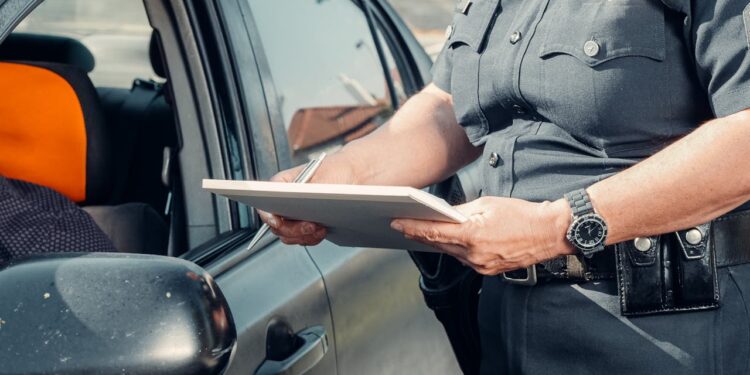Kenya is on the brink of a major transformation in how vehicle safety is managed. The government has introduced the proposed Traffic (Motor Vehicle Inspection) Rules, 2025, aiming to modernize inspection processes, enhance road safety, and curb pollution. If implemented, these changes will affect private car owners, commercial fleet managers, public service vehicle (PSV) operators, and motorcycle riders across the country.
Let’s break down what the proposed rules entail, what’s changing, and how drivers can start preparing today.
Key Highlights of the Proposed 2025 Vehicle Inspection Rules
Mandatory Inspections for Older Private Vehicles
One of the most notable changes is the introduction of mandatory inspections for private vehicles older than four years. Until now, only commercial vehicles and PSVs were subject to regular checks. Under the proposed rules:
- Private vehicles: Inspected every two years once over four years old.
- Commercial and PSV vehicles: Inspected annually, as per the current practice.
- Brand new cars: Exempt from inspection for the first four years after registration.
This marks a shift toward a more inclusive vehicle inspection model, placing responsibility on all drivers to ensure roadworthiness.
Expansion of Computerized Vehicle Inspection (CVI) Centres
The National Transport and Safety Authority (NTSA) plans to scale up its network of Computerized Vehicle Inspection (CVI) centres. These facilities will offer standardized, automated checks using modern diagnostic tools to assess:
- Brake efficiency
- Emissions and air pollution
- Suspension and steering condition
- Electrical and lighting systems
- Structural integrity and body condition
- Tyre tread depth and general wear
By reducing human error and manual inconsistencies, the CVI system is expected to minimize corruption and improve inspection reliability.
All-Digital Inspection Process
All inspection activities—including bookings, payments, and certificate issuance—would be conducted digitally via the NTSA TIMS portal. Vehicle owners will need:
- Their registration number
- Owner ID or company PIN
- Preferred inspection centre and time slot
Payments will be made online, and successful inspections will result in digital certificates and tamper-proof windshield stickers indicating the next due inspection date.
Proposed Inspection Schedule by Vehicle Type
| Vehicle Type | First Inspection Due | Inspection Frequency |
|---|---|---|
| Brand New Private Vehicles | After 4 years | Every 2 years |
| Used Imports | Within 60 days of registration | Every 2 years |
| Commercial Vehicles | Upon registration | Every year |
| PSVs (Matatus, Buses) | Upon licensing | Every year |
| Motorcycles | After 1 year | Every 2 years |
| School Buses | Upon licensing | Every year |
Emissions Testing: Environmental Compliance in Focus
Another major addition to the inspection process is the integration of emissions testing. This aims to reduce the number of older, high-emission vehicles on Kenyan roads. Cars emitting excessive black smoke or exceeding CO₂ thresholds could face mandatory repairs or even deregistration.
This initiative supports Kenya’s push for cleaner cities and improved air quality, especially in traffic-congested areas like Nairobi, Kisumu, and Mombasa.
What Vehicle Owners Need to Prepare
If these proposals are adopted, here’s how to stay ahead:
✅ Keep your car in top shape year-round. Don’t wait for inspection time—regular servicing improves safety and saves you from costly repairs later.
✅ Budget for inspection costs. Expect fees in the range of KES 2,000–4,000, similar to current commercial inspection rates.
✅ Plan your inspection early. Avoid last-minute rushes by setting calendar reminders.
✅ Use inspection reports wisely. They can help identify critical issues before they become expensive or dangerous.
Want to find second-hand cars that meet these standards? Browse listings at https://auto24.co.ke/—a trusted platform for affordable, inspected vehicles in Kenya.
Potential Challenges and Concerns
While the proposals aim to enhance road safety, they’re not without hurdles:
Infrastructure Gaps
- Limited CVI facilities in rural counties
- Potential congestion in urban inspection centres
- High costs of rolling out national coverage
Public Awareness & Financial Strain
- Need for intensive education campaigns
- Impact on low-income car owners who may struggle with repair or inspection fees
Industry Feedback
Automotive stakeholders have voiced concerns about the readiness of infrastructure and the need for a realistic transition period. The NTSA has responded by proposing partnerships with licensed private garages and encouraging public-private partnerships (PPPs) to expand capacity.
Current vs. Proposed System: A Quick Comparison
| Aspect | Current System | Proposed 2025 System |
| Who Must Inspect | Only PSVs & Commercial Vehicles | All vehicles over 4 years old |
| Inspection Process | Mostly manual | Fully computerized via CVI |
| Booking & Payment | Often in-person | 100% digital through TIMS |
| Emissions Testing | Not consistently enforced | Standard part of the inspection |
| Proof of Inspection | Paper documents | Digital certificate + tamper-proof sticker |
Final Thoughts: Prepare Now, Drive Safer Tomorrow
The Traffic (Motor Vehicle Inspection) Rules, 2025, if enacted, could revolutionize how Kenya ensures vehicle safety and environmental responsibility. While some drivers may view the changes as burdensome, the long-term benefits—including fewer accidents, cleaner air, and more reliable vehicles—are undeniable.
Here’s how to stay ready:
- 📘 Keep your logbook and service records up to date
- 🔧 Schedule preventative maintenance, not just repairs
- 💻 Learn how to use the NTSA TIMS platform for inspections
- 🚘 If buying a second-hand car, choose platforms like https://auto24.co.ke/ that promote vetted listings
For additional news on vehicle regulations, maintenance tips, and Kenya’s motoring trends, visit https://automag.co.ke/—your trusted source for everything automotive.
Stay Informed & Share Your Views
Do you believe these inspection rules will make a difference? Will they help reduce road accidents or pose a burden for everyday drivers? Join the conversation on our social platforms or email us with your thoughts.
And remember: Safe cars make safer roads.




